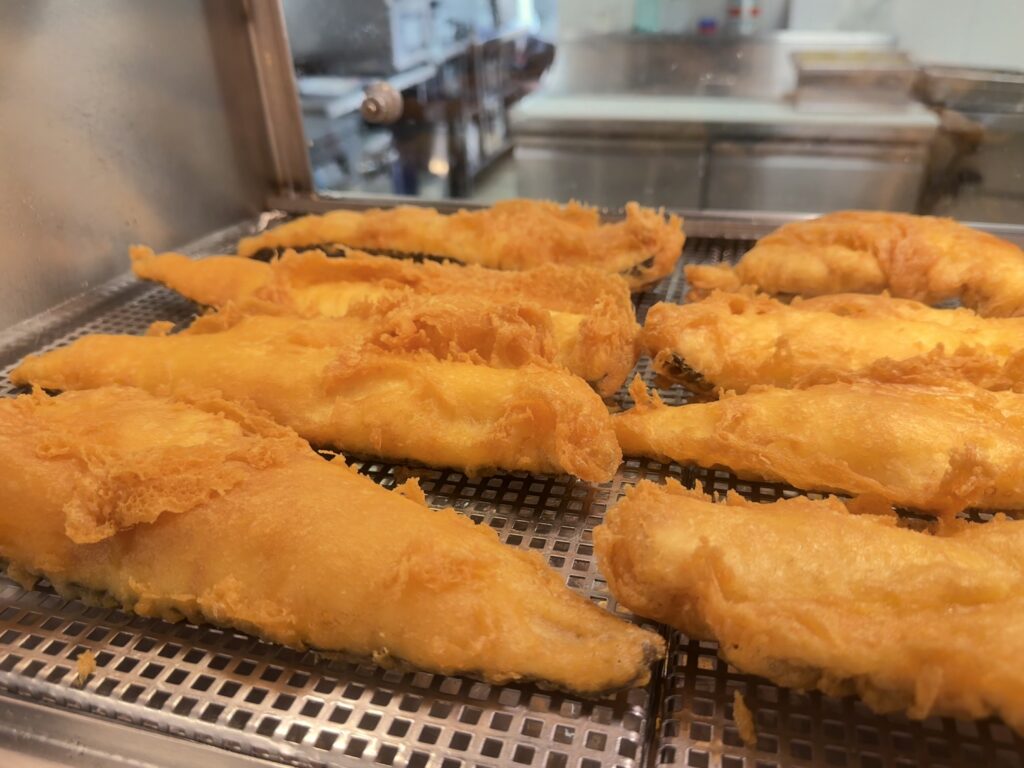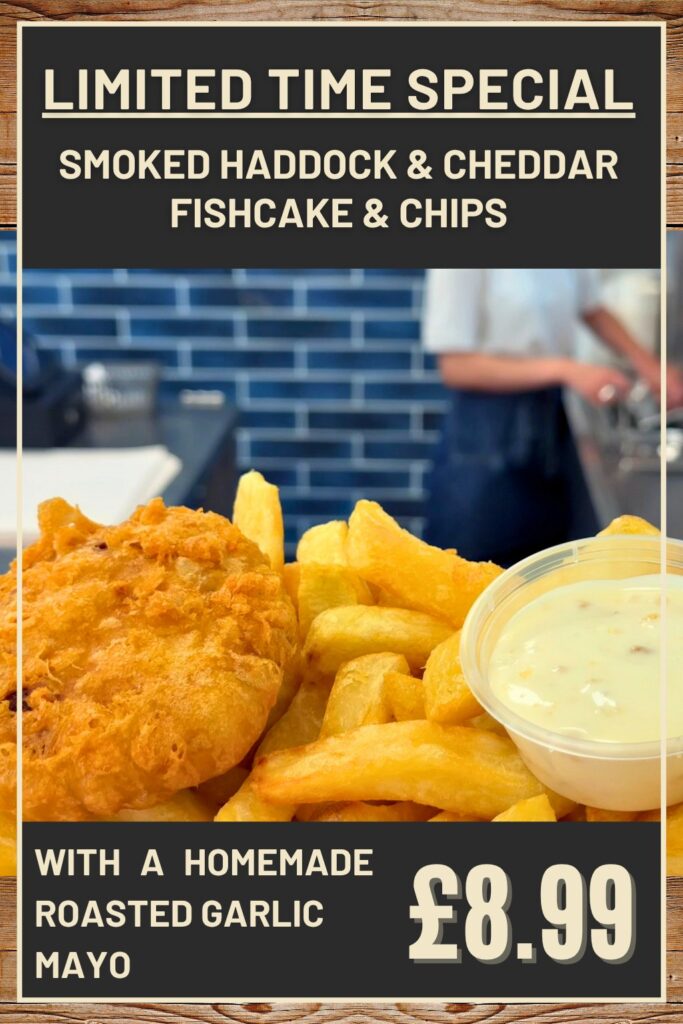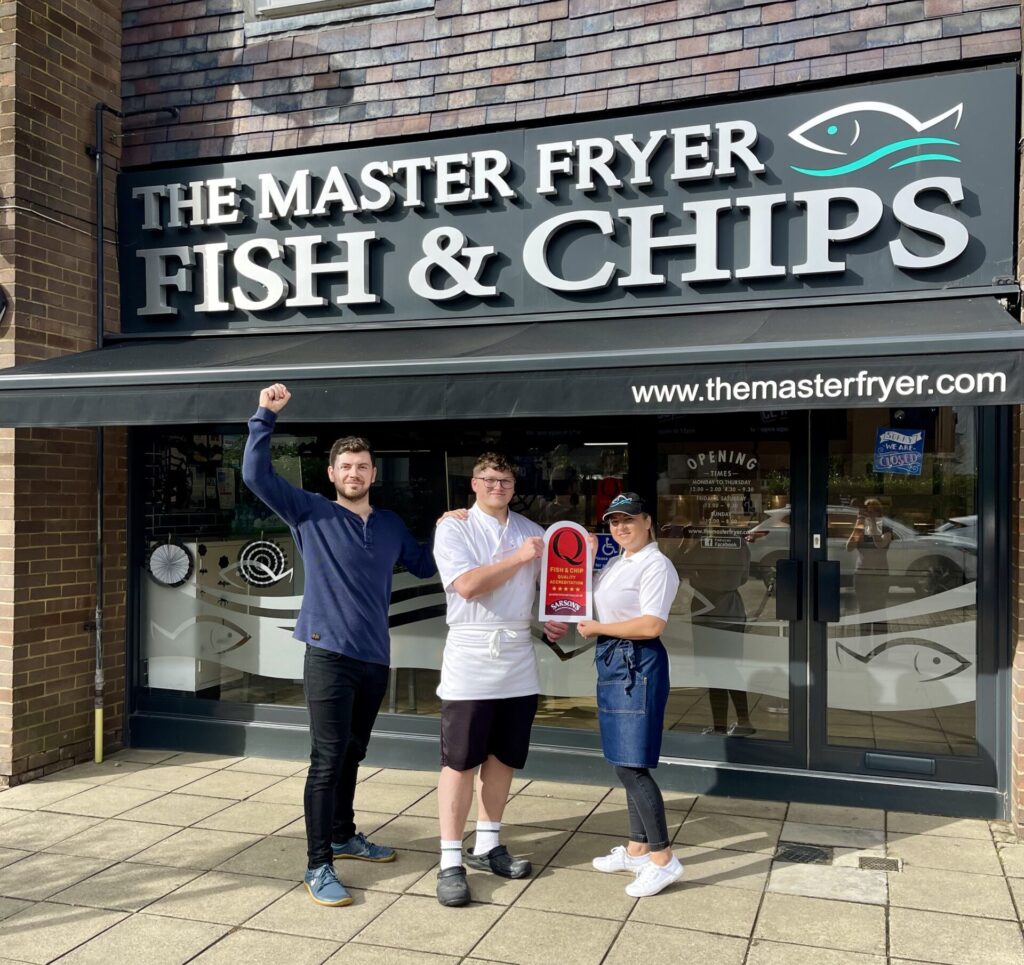In a time where rising costs and fierce competition are hitting takeaways hard, it’s tempting to cut back. But Tom Hartley, co-owner of The Master Fryer in Billingshurst, Sussex, is pushing forward one small step at a time
“I’d say we have been struggling, this year particularly,” admits Tom, who has been a partner in The Master Fryer’s Billingshurst business since 2019. “But I try to have the mindset of let’s not cut back. Let’s see what we can try to change or improve. I’ve spent the whole year trying to see if we can make everything just 1% better. Asking, can we improve our batter a little bit better? Can we change the oil more often so it’s more consistent, whoever is frying?”
The changes Tom has made seem to be paying off, with reports that trade is picking up slightly more each week.
First job
Tom first started working for The Master Fryer, which has two other takeaways in nearby Horsham and Crawley, when he was a teenager. Although he isn’t technically part of the owning family, the business has been a constant in his life.
“My mum used to work at the Crawley shop when I was about four, and I got my first job there at 16. I started as a chip boy, then became a server, helped out the frier, and before long, I was frying myself. After that, I moved up to assistant manager, then manager and in 2019, I was offered the chance to buy into the Billingshurst shop.”
Back then, Tom was full of excitement. “I thought, ‘Oh yeah, I’ve got it. I’ve cracked it’,” he laughs. “But I’ve learned more in the five years I’ve been in Billingshurst than in the 13 years in the trade before.”
Tom’s first few months as an owner were far from easy. As soon as he took the shop over, the existing staff left, leaving just him. Six months later, Covid hit. “We were running at a loss for probably six months, and I thought, I don’t know how I’m going to get out of this one.”
Since then, it’s been one challenge after another — the cost-of-living crisis, rising energy bills, and increasing competition, especially with new food outlets opening in the area. “We noticed that lunchtimes were taking a hit because a Starbucks opened up offering all-day coffee and WiFi. There’s a pizza drive-through now, too. It’s so saturated with all these different options that if you want a piece of the pie, you’ve got to be parading yourself around.”
In response, Tom has leaned into trial and error, starting by adding signage on a local roundabout to raise their profile, and lunchtime specials in the form of Frier’s Favourites – last month included king prawns with a sweet chilli sauce. He has ten more lined up ready for the coming months. He’s also introduced coley to the menu as a more affordable alternative to customers feeling the pinch. Much to Tom’s surprise, the takeaway has gone from selling a handful of pieces a week to 90kg a week.
“It’s not the best seller, but it’s definitely picked up, and it gives older people and people who are on a budget something a bit more affordable so they don’t have to miss out,” says Tom. “It’s also helped us reduce costs a bit, just from a cash flow perspective. Instead of spending £250–£280 on a box of cod, we’re paying around £150 for a box of coley.”


Success with coley
The success with coley has come down to smart marketing: Tom has placed it right at the top of the website. “£7.50 fish and chips just catches your eye straightaway,” says Tom. “A customer can get fish and chips for less than the price of a piece of cod. Some people do question what it is, but the real key is training the staff, getting them to try it so they know it tastes similar and they can sell it with confidence.”
For Tom, small gains are everything, but one major change this year has been the creation of a bespoke batter mix, made specifically for consistency.
“We used to mix batter ourselves, and I hated how inconsistent it was between friers,” he says. “My wholesaler, T. Quality, connected me with Middleton Foods, who worked with me over months to tweak the formula. Four samples later, we had a bespoke mix that we use exclusively. I’ve never enjoyed frying more.”
This kind of supplier relationship was new territory for Tom. “Honestly, I didn’t know you could have a good relationship with suppliers like that. But it’s made a huge difference.”
Another of Tom’s most recent wins has been gluten free Tuesdays, introduced in June. It’s only been running for six weeks, but already Tuesdays are up about 50%. And the best part for Andy is the positive feedback the shop is receiving on social media and TripAdvisor.
“Families tell us that it’s made a big difference being able to come out together to eat. We’ve had people travelling in from other local towns, it’s brought new faces into the shop that I’ve never seen before, and the orders are much bigger because you’ve got the whole family ordering.
“We’ve even got people who have migrated from Wednesday to Tuesday because they love it. I guess the oil is brand new, the batter’s lighter. It’s a crispy, gluten free batter that travels well. And because it sets so well, you can cook it for less time, so the fish retains so much more moisture. So you crack into it, and you still get the great crunch of the batter, it’s almost like an ocean quality. And that’s classic fish and chips for me.”



Supplier relationships
Despite the higher costs — more expensive ingredients, extra oil changes, additional prep time, and staff — Tom has made a point not to charge extra for gluten free options. It’s a decision he’s been able to make thanks to strong supplier relationships.
“It didn’t feel right penalising people for a dietary requirement, so we’ve kept prices the same as our standard menu,” Tom explains. “The only way it’s been possible is thanks to T.Quality and Middletons, who’ve helped us secure great pricing on gluten free products that normally cost three times as much. It’s a good example of how independent shops can thrive when they’ve got strong supplier relationships behind them.”
Despite the pressures of operating in the current climate, Tom manages to keep a sense of humour and uses it to engage with customers. “We’ve got a jar on the counter. If someone comes in and says, ‘You must be hot back there,’ they have to pay a fine! We’ve raised about £25 so far. I’m going to surprise the team with a breakfast outing at the end of the summer.”
He adds: “Most of our team are 16-year-olds, and little things like that help them feel more confident and break the ice with customers.”
With fish prices peaking at over £280 a box, Tom’s managed to hold off raising prices for as long as possible – he only just raised small cod and chips by 10p to £12.30. “We try to absorb what we can and hope things settle.”
He’s banking on 2027, when fish quotas are expected to improve. “Hopefully, what I’m doing now is an investment. It’s tough at the moment, but if we keep doing things right and engage more with the community, we’ll come out the other side stronger.”
So what’s next for The Master Fryer? Tom is looking to focus on lunchtimes with his line-up of Frier’s Favourites, which will include smoked haddock and cheddar fishcakes, cod and chorizo croquettes, and squid rings, among others. “I’ve ordered some nice boxes to make these stand out. They will help make us slightly different as customers will be able to get classic fish, chips and sauce but also something a little more fancy.”
Tom is also looking into dairy free options, driven by customer requests, saying: “It’s just another way to be inclusive and stand out.”
As many in the industry cut back, Tom’s approach is refreshingly different: double down on quality, build community, and never stop improving.
“Sometimes the instinct is to cut back,” Tom concludes. “But if that doesn’t work, what do you do? You can only cut so far. Sometimes, you have to give more — and try something different.”










